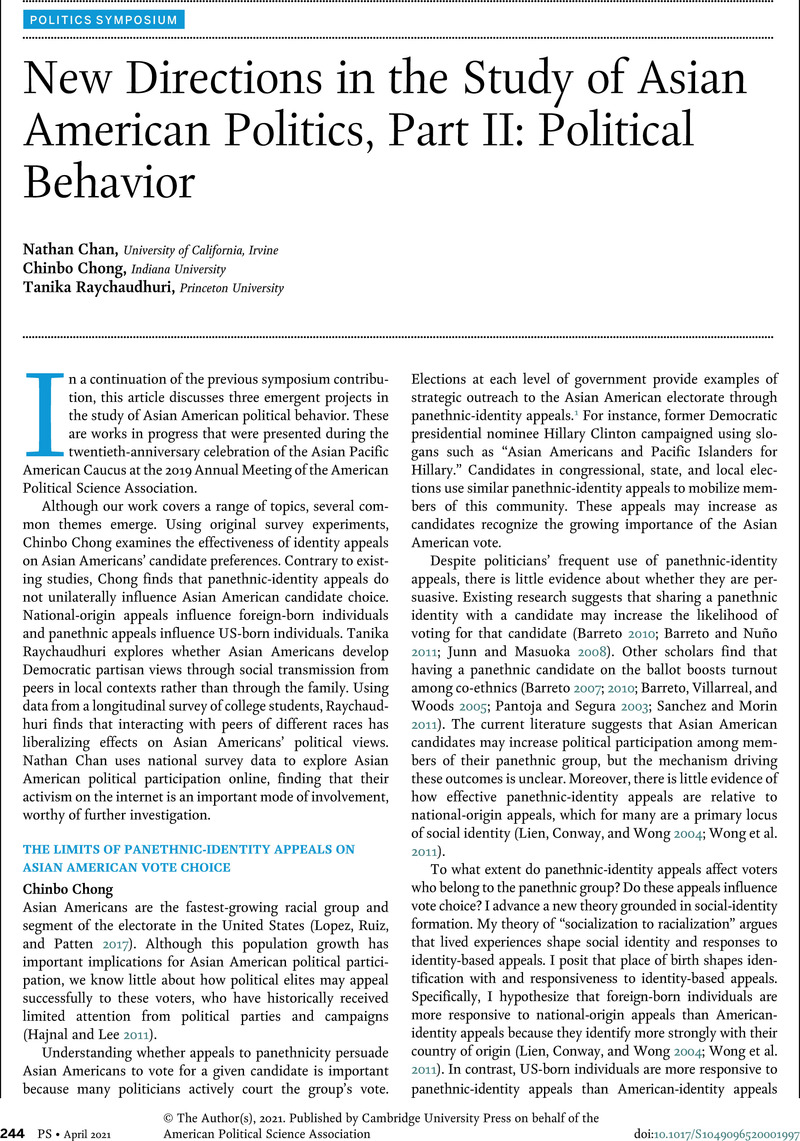Crossref Citations
This article has been cited by the following publications. This list is generated based on data provided by Crossref.
Zhou, Kayee
and
Patterson, Dennis
2021.
Changing patterns of Asian‐American partisanship: Accounting for the politicization of the U.S.’s fastest growing minority.
Social Science Quarterly,
Vol. 102,
Issue. 4,
p.
1428.





